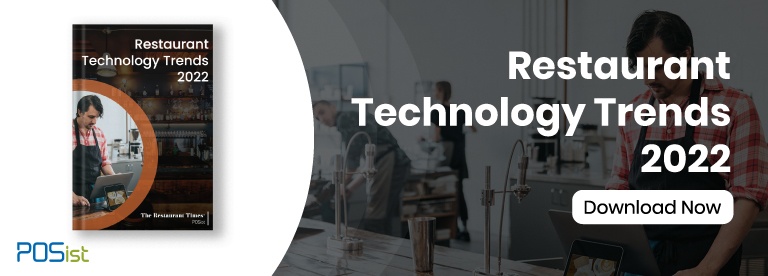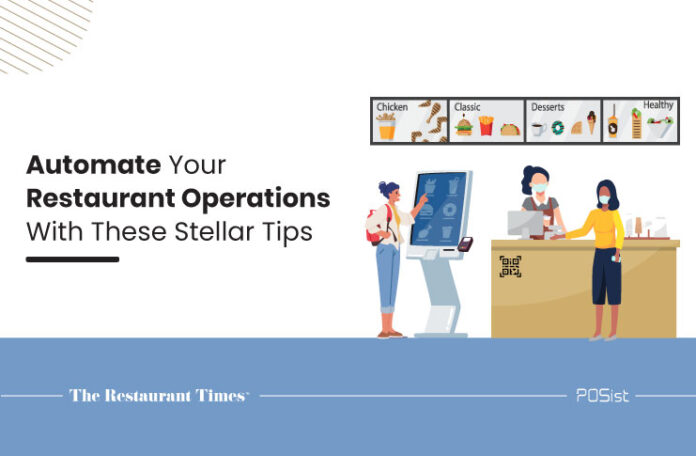When we talk about automated restaurants, we are talking about machines and systems that streamline restaurant operations. It means lower costs and higher efficiency across all aspects of a restaurant business. In the post-pandemic scenario, automation can reduce labour requirements and eliminate the likelihood of manual errors. With technology such as digital payments seen as critical for customer satisfaction, restaurant operators are now exploring its true potential and figuring out ways in which it can boost their growth.
It is because of technology that cloud kitchens have seen a significant rise in the global restaurant market. Technology has opened the door to a number of opportunities for restaurant operators and allowed businesses to diversify their operations. For example, adding contactless dining and online delivery services is one of the greatest perks of technology that restaurants can leverage.
6 Must-Have Elements Of An Automated Restaurant
When it comes to technology, operations can be improved in different directions. Here are some of the necessary elements required to run an automated restaurant.
1. Point Of Sale (POS) System
The first and the most important thing that one needs to have in an automated restaurant is a restaurant automation system or a Point Of Sale (POS) system whose functionality goes far beyond its name. It’s not just a POS terminal, but a cloud-based software that automates every restaurant operation, from receiving orders in bulk and storing the data centrally to marketing and building customer relationships.
It is an all in one product that lets you gather customer details and develop marketing strategies for driving average order value and retention. You can manage your inventory better with a robust POS. You can gauge your business’ growth with the help of the real-time daily, weekly, monthly, and yearly reports provided by the system. The CRM module helps you create a good relationship with customers through paperless feedback forms and CSAT surveys. Furthermore, a POS also lets restaurants integrate with multiple third-party applications to ease delivery, payment, and other operations.
2. Kitchen Display System (KDS)
Kitchen Display System (KDS) is something that has gained importance over the years. It is becoming an increasingly indispensable technology for commercial kitchens where there’s always a rush to collect all the orders and deliver them as soon as possible. KDS eradicate the delay in taking orders and improve table turnover. An added benefit is that they are cheaper than paper KOTs.
The orders, once collected, instantly get displayed on the KDS and are clearly visible to the chefs and the kitchen staff. The chefs can note the order details, including all the customization requests and prepare them accordingly. This digitized procedure quickens the ordering process and reduces the scope for manual errors while ordering and order preparation.
3. Self Ordering Kiosks
Self-ordering kiosks are becoming increasingly popular and changing the way restaurants function, especially quick-service restaurants. They are an additional channel for customers to place orders without waiting in long queues, thereby reducing wait time and staff workload.
These kiosks can be easily integrated with the restaurant’s Point-of-Sale (POS) system and can further reduce its labour costs. In addition, they track customer preferences and proactively suggest menu items, helping the restaurant in targeted upselling.

4. Smart Refrigerators
With increasing technological advancements, every little thing is going ‘smart’. There are smart offices, smart homes, smart lights, and whatnot. Now, smart refrigerators are also coming into action. Smart refrigerators are a product of IoT technology and are finding extensive applications in commercial kitchens.
For example, keeping track of inventory and alerting you when any ingredient goes out of stock. This lets you create purchase orders on time, reducing storage space and lowering costs. If not manually, it can create and send purchase orders on its own and send them to the vendors. This way you never go out of stock and always keep your inventory stocked. Moreover, you can also take care of the ingredients that have a low shelf life with the help of a smart refrigerator.
5. Robotic Staff
Robotic staff are no longer science fiction. Now, they are a thing of the present across restaurants in India as well as other parts of the world. From process automation, the restaurant industry is now moving towards robotic technology across the front- and the back-of-the-house. In the front-of-the-house, robots are being used to enhance customer experience and help in bartending, serving, and waiting purposes. On the other hand, in the back-of-the-house, robots are deployed to help the chefs prepare recipes and perform tasks that require extreme precision, accuracy, and consistency.
For instance, in Hyderabad, a restaurant named “Chitti In Town’’ creates an enjoyable experience for diners with its manoeuvrable robots and their interactive abilities. The robots, dressed in sarees, bring food to the diners and shake hands with them. The technology is widely spreading to other cities like Bengaluru and Chennai.
6. Voice Technology
Voice technology is something that provides virtual assistance to the chefs and the kitchen staff. Popular brands like KFC and Pizza Hut using this kind of technology are setting an example for other restaurants and smaller brands to follow their lead. Voice technology is useful in two major ways for restaurant operators:
- To enhance customer experience: Virtual assistants like Alexa or Google Assistant allow customers to order via voice command, making the entire ordering process easier. Customers can also give feedback verbally and the voice technology would cater to their grievances, creating a sense of personalization.
- To improve back-of-the-house operations: Voice technology is further expected to enhance the back-of-the-house operations by assisting the chefs in order preparation. For instance, informing the chefs when a burger is done, or confirming the exact portions of ingredients to be used while cooking via speakers.
In the wake of COVID-19, technology has been a saviour for restaurants. Not only has it helped the restaurant to survive the multiple waves but has also enhanced operations and improved customer experience. So, if you haven’t yet thought about automating your restaurant, then do it already!

















